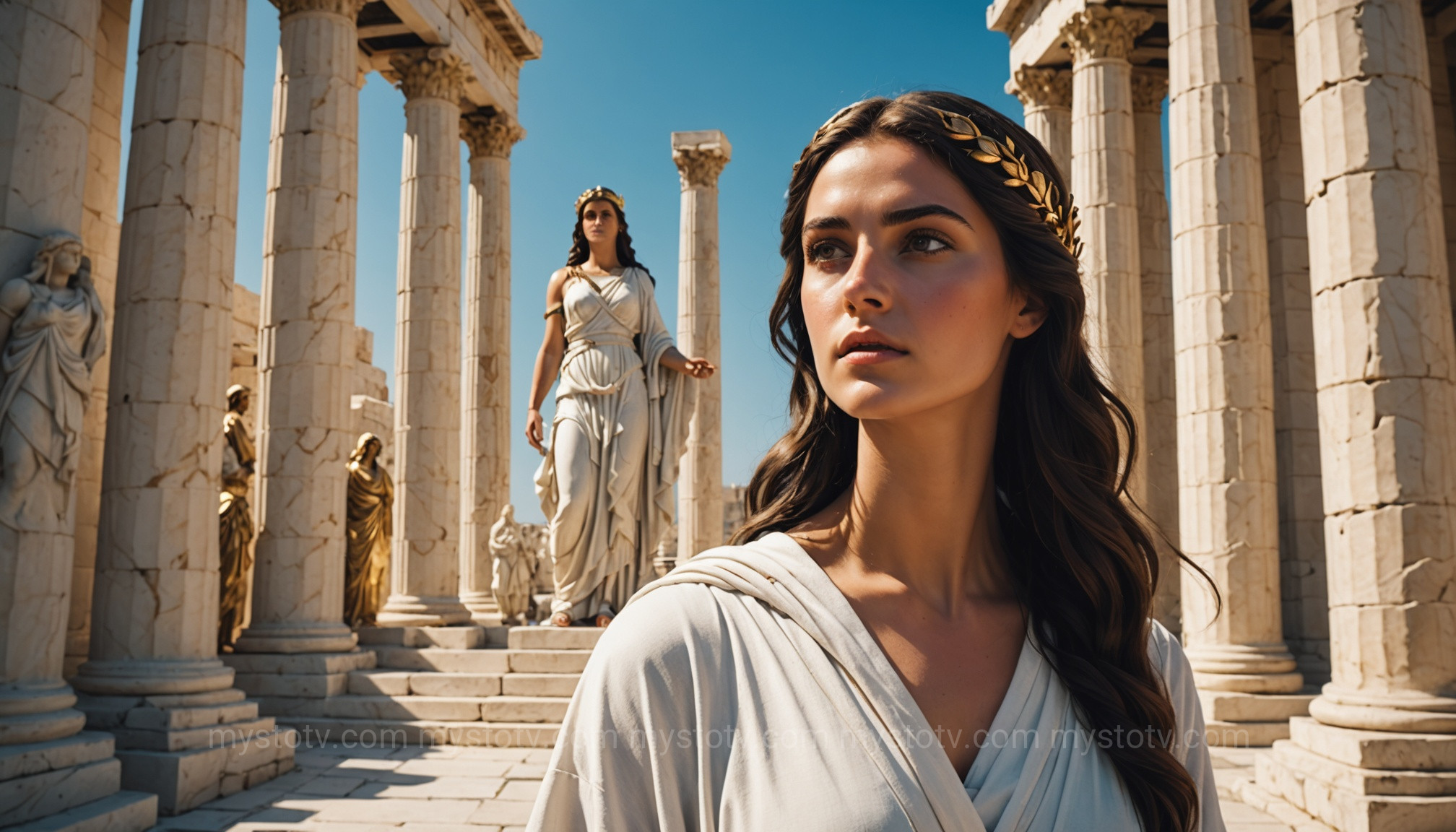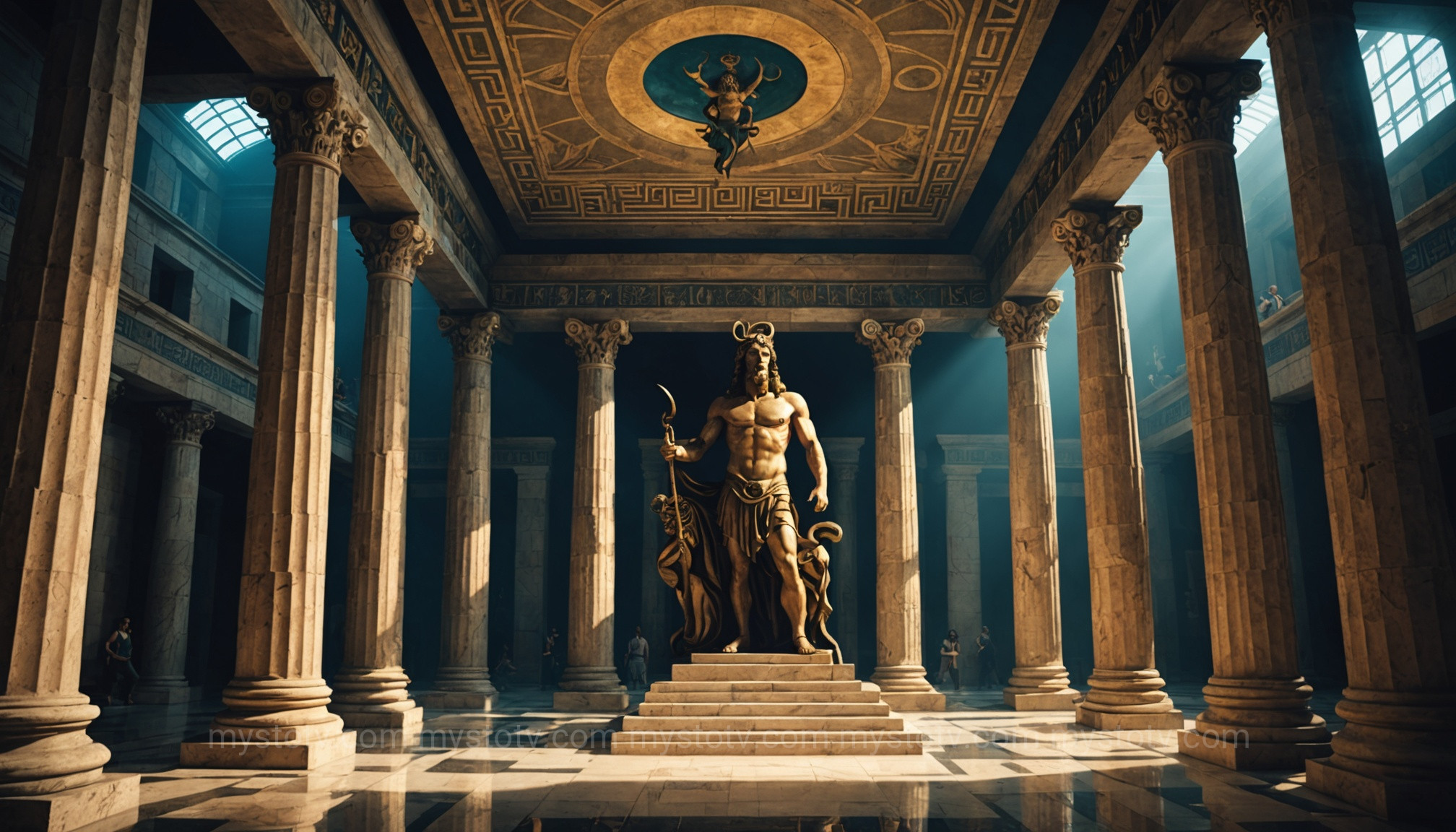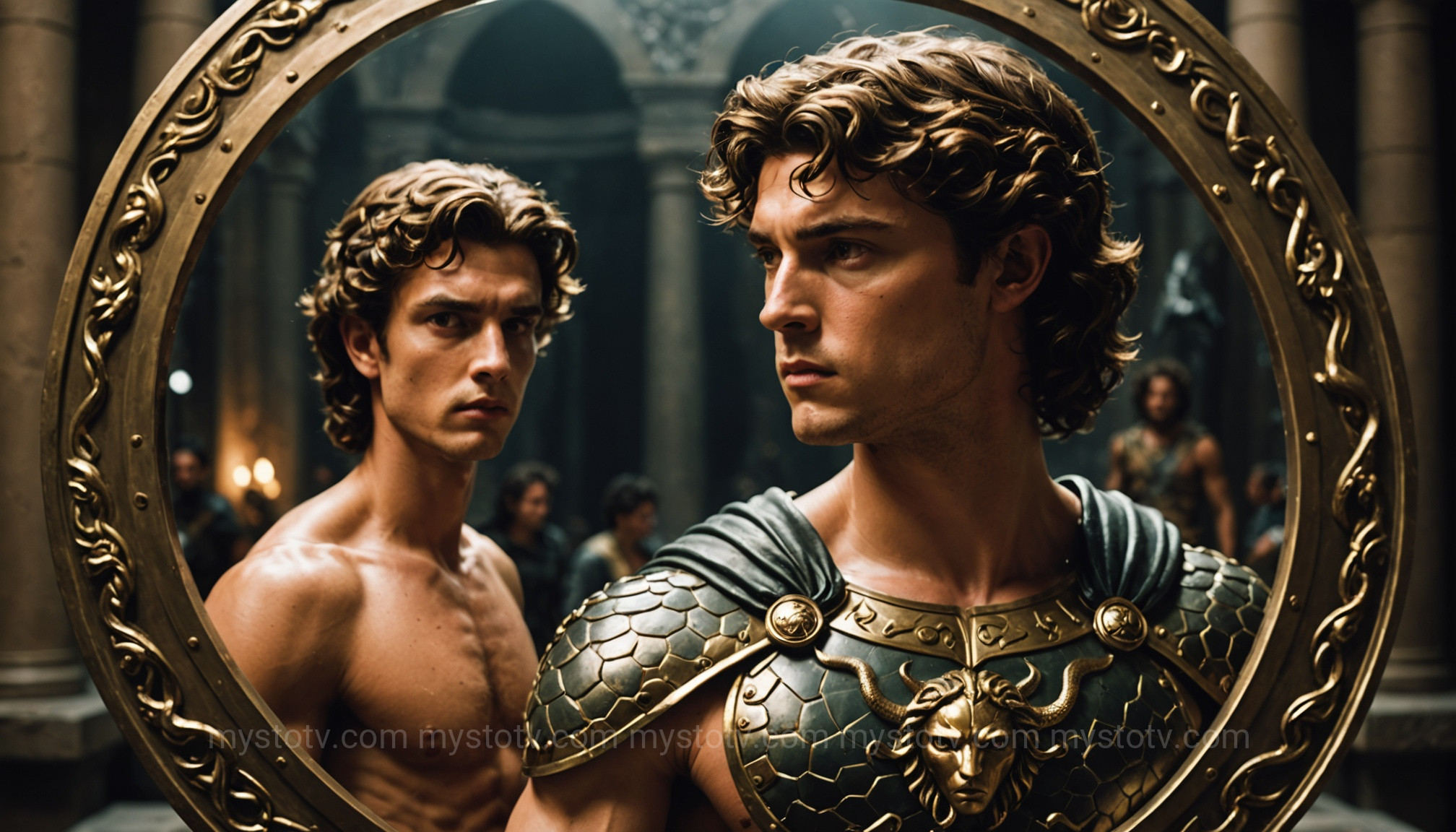Growing up, my first encounter with Medusa was through the grainy screen of a VCR playing an old fantasy movie. She was terrifying—a monster with snakes for hair, whose only purpose was to be slain by the hero. For years, that was the entire story for me. It wasn't until I stumbled upon the original myths in a classics course that I felt a jolt of recognition and injustice. The monster I knew was a footnote to a much darker, more human tragedy. The full medusa story explained is not one of a simple monster, but of a victim whose narrative was stolen. This article peels back the layers of the myth, revealing the woman behind the legendary curse and exploring why her story resonates so powerfully today.
Contents
- 1 Before the Curse: The Medusa Story Explained Through Her Origins
- 2 The Turning Point: The Traumatic Medusa Story Explained by Ovid
- 3 The Curse or a Shield? A Deeper Look at the Medusa Story Explained
- 4 The Final Act: The Medusa Story Explained in Her Encounter with Perseus
- 5 Beyond the Myth: The Modern Medusa Story Explained in Feminism and Pop Culture
- 6 Frequently Asked Questions about the Medusa Story
- 7 References
Before the Curse: The Medusa Story Explained Through Her Origins

To truly understand the tragedy, we must first meet the woman Medusa was before the curse. Far from the monstrous creature of legend, she was once a mortal woman of breathtaking beauty. This initial part of the medusa story explained is crucial because it establishes the profound loss she would later endure. Her narrative begins not with monstrosity, but with devotion and humanity.
A Mortal Among Gorgons
In many versions of the myth, particularly the later ones that shaped her tragic narrative, Medusa was the only mortal of three sisters known as the Gorgons. Her sisters, Stheno and Euryale, were immortal, fearsome beings from birth. Medusa, however, was born human, subject to the whims of the gods, aging, and death. This distinction is vital. Her mortality made her vulnerable in a way her sisters were not, setting the stage for the divine cruelty that would define her fate. Her most celebrated feature was her magnificent hair, which was said to rival the beauty of the goddess Athena herself.
A Priestess of Athena
Medusa’s devotion led her to become a priestess in the temple of Athena, the goddess of wisdom, warfare, and crafts. As a priestess, she took a vow of celibacy, dedicating her life to serving the virgin goddess. This context adds another layer of betrayal to what comes next. Her sacred space, a place of supposed safety and divine protection, would become the scene of her violation. Her commitment to the goddess she served was absolute, making Athena’s subsequent actions all the more devastating. The purity of her life before the curse is the foundation upon which the entire tragic medusa story explained is built.
The Turning Point: The Traumatic Medusa Story Explained by Ovid

The most widely known version of Medusa's tragic transformation comes from the Roman poet Ovid in his work, Metamorphoses. This is where the narrative shifts from a simple myth to a harrowing tale of injustice. This part of the medusa story explained is often the most shocking and heartbreaking for modern audiences, as it details a profound betrayal by the very gods she worshipped.
Poseidon's Assault in the Sacred Temple
According to Ovid, the sea god Poseidon was captivated by Medusa’s beauty. Consumed by lust, he pursued her and, ignoring her vows and the sanctity of the location, assaulted her on the floor of Athena’s own temple. This act was a double violation: an act of violence against Medusa and a profound act of sacrilege against Athena, desecrating her sacred space. Medusa, the victim, was powerless against a god. This moment is the cataclysm that irrevocably changes her life, transforming her from a devout priestess into a figure of terror through no fault of her own.
Athena's Vengeful Reaction
Here lies the myth’s greatest cruelty. Athena, enraged by the defilement of her temple, did not punish Poseidon—a fellow Olympian god who was her equal and rival. Instead, she unleashed her fury upon the mortal victim, Medusa. This is a critical point in the medusa story explained; it highlights the often-unjust power dynamics of the Greek pantheon. Athena "punished" Medusa by transforming her beautiful hair into a writhing nest of venomous snakes. Her face was twisted into such a hideous visage that any mortal who looked directly upon her would be turned to stone. Medusa was exiled, her life as a human and a priestess utterly destroyed.
The Curse or a Shield? A Deeper Look at the Medusa Story Explained

Was Athena’s act pure punishment, or could it be interpreted differently? This analytical perspective is key to understanding why the medusa story explained has such enduring power. By examining the so-called curse from different angles, we can see the deep complexities of Medusa’s fate and Athena's motivations.
The Punishment Perspective
The most straightforward interpretation is that Athena punished Medusa for "allowing" her temple to be desecrated. In this patriarchal view, common in ancient myths, the female victim often bears the blame and shame for her own assault. Athena, as a virgin goddess, may have seen Medusa as tainted, her presence a permanent stain on the temple's purity. The curse, therefore, was a vindictive act meant to erase Medusa's beauty—the very thing that attracted Poseidon's unwanted attention—and banish her from civilized society. It was a clear message about the power of the gods and the disposability of mortals.
The Protection Interpretation
A more modern, feminist interpretation offers a different perspective. Could the curse have been a twisted, terrible form of protection? By making Medusa "monstrous," Athena armed her. Her petrifying gaze ensured no man could ever harm her or even look at her again. The snakes in her hair, symbols of terror, became her defenders. While it stripped her of her former life and isolated her completely, this transformation gave her a lethal power she never had as a beautiful mortal maiden. In this reading, Athena's act is still cruel and unjust, but it's framed as a tragic solution to a patriarchal problem: giving a victim the power to destroy her aggressors, even if it costs her own humanity. This analysis of the medusa story explained adds a layer of tragic agency to her character.
The Final Act: The Medusa Story Explained in Her Encounter with Perseus

The final chapter of Medusa's life solidifies her status as a "monster" in the annals of Greek mythology. Her story becomes intertwined with the heroic quest of Perseus, who is tasked with bringing back her head. This section of the medusa story explained demonstrates how a victim's narrative can be co-opted and reframed to serve a male hero's journey.
The Hero's Quest for a Trophy
Perseus, a demigod son of Zeus, is sent on an impossible mission by King Polydectes, who wants Perseus out of the way so he can marry Perseus's mother, Danaë. The task: to slay Medusa and bring back her head. Aided by the gods—ironically, including Athena, who provides him with a mirrored shield—Perseus finds Medusa in her isolated lair. The myth portrays this as a heroic deed, with Perseus cleverly using the shield's reflection to avoid her gaze and decapitate her in her sleep. For Perseus, Medusa is not a tragic figure; she is a challenge, a monster, and a trophy whose head becomes a powerful weapon.
The Aftermath: Medusa's Legacy
Even in death, Medusa's story continues. From her severed neck, two beings spring forth: Pegasus, the winged horse, and Chrysaor, a giant with a golden sword. These were her children by Poseidon, birthed only at the moment of her death. This detail adds a final, tragic layer to her violation. Her head, still possessing its petrifying power, is mounted on Athena's shield, the Aegis. The very weapon that destroyed her becomes a symbol of the goddess's power, a final, cynical twist in the medusa story explained. The victim's power is usurped and wielded by her tormentor.
Beyond the Myth: The Modern Medusa Story Explained in Feminism and Pop Culture
Medusa’s story did not end with her death. In the centuries since Ovid first penned his version, she has been resurrected time and again, not as a monster, but as a potent symbol. The modern interpretation of the medusa story explained is one of reclamation, where her narrative is retold from her perspective, transforming her from a villain into a powerful icon.
A Symbol of Female Rage and Survival
For modern feminist movements, Medusa has become an emblem of righteous female fury and a symbol for survivors of sexual assault. Her story is seen as a classic example of victim-blaming, where a woman is punished for a crime committed against her. Her monstrous form and deadly gaze are reinterpreted not as a curse, but as a manifestation of her rage against an unjust patriarchal system. She represents the "difficult" woman who refuses to be a silent victim. The Medusa tattoo, for instance, has been adopted by many survivors as a symbol of protection and empowerment—turning a weapon used against them into a shield.
Medusa in Contemporary Art and Film
This re-evaluation is evident across contemporary culture. Luciano Garbati's 2008 sculpture, Medusa with the Head of Perseus, which reverses the classical narrative by showing a determined Medusa holding the severed head of her killer, went viral as a symbol of the #MeToo movement. In film and literature, creators are increasingly exploring her backstory, focusing on her humanity and the injustice she suffered. They challenge the audience to look past the monster and see the woman. This ongoing cultural dialogue ensures the medusa story explained remains relevant, evolving from a simple horror story into a complex commentary on power, justice, and survival.
Frequently Asked Questions about the Medusa Story
Why did Athena punish Medusa instead of Poseidon?
This is a central point of injustice in the myth. In the divine hierarchy of Olympus, punishing Poseidon, a powerful male god, was far more difficult and politically risky for Athena than punishing a mortal priestess. The act reflects the patriarchal norms of the ancient world, where mortal women were often held responsible for the actions of powerful men. Athena's rage was directed at the desecration of her temple, and punishing the vulnerable party, Medusa, was the path of least resistance and a way to make a brutal example out of the situation.
Was Medusa always a monster with snakes for hair?
No, she was not. In the most tragic and popular versions of the myth, particularly Ovid's, Medusa was born a beautiful mortal woman. Her transformation into the snake-haired Gorgon with a petrifying gaze was a direct result of Athena's curse after she was assaulted by Poseidon. Earlier, pre-classical depictions of Medusa sometimes show her as a primordial monster from birth, but the story of her transformation is what has given the myth its enduring tragic power.
What happened to Medusa's head after she was killed?
After Perseus decapitated Medusa, her head retained its power to turn onlookers to stone. Perseus used it as a weapon on several occasions, most notably to save Andromeda from a sea monster and to defeat King Polydectes and his followers. Ultimately, he gave the head to Athena, who mounted it on her shield, the Aegis. It served as a terrifying emblem of her power, a final irony where the symbol of Medusa's suffering became an instrument of her tormentor's might.
References
- Ovid. Metamorphoses. Book IV, lines 790–803. (c. 8 AD). This work is the primary source for the tragic version of Medusa's transformation.
- Garbati, Luciano. Medusa with the Head of Perseus. 2008. Sculpture. This contemporary artwork represents a significant modern reinterpretation of the myth.
- Stephen, R. (2016). The Monstrous-Feminine in Classical and Contemporary Popular Culture. Inquiries Journal, 8(10). This type of academic analysis explores the feminist readings of figures like Medusa.
The medusa story explained is a powerful journey from a one-dimensional monster to a deeply complex and tragic figure. By looking beyond the snakes and the stone gaze, we uncover a story about injustice, victim-blaming, and survival that feels more relevant now than ever. Medusa's legacy is no longer just that of a beast to be slain by a hero; it is a testament to the power of a narrative reclaimed. The modern interpretations of her legacy show that she has been transformed once more—this time by us, into a symbol of strength and resilience for a new generation.